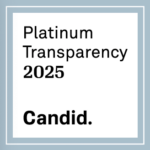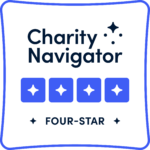By TARA PARKER-POPE, If someone invented a pill to cut a cancer risk in half, would you take it?
Who wouldn’t?
Apparently the answer is millions of women — people like Cindy Birkhold of
The pill is tamoxifen, and Ms. Birkhold, now 52, was considered an ideal candidate for it:
she tested positive for a breast cancer gene, her mother had ovarian cancer, and her aunt had breast cancer. Yet rather than take tamoxifen, she opted for surgery to remove her breasts and ovaries.
“I even went so far as to get the prescription” for tamoxifen, she said. “But then I started reading more and decided this isn’t the way I’m going to go. I don’t like to take drugs.”
Such decisions have become a topic of growing concern among doctors and researchers, who are increasingly focused on treatments to prevent cancer in high-risk patients.
While many kinds of cancer are resistant to such treatments, tamoxifen is well documented to prevent breast cancer in many women at high risk for it. Now another drug, raloxifene, has been shown to have a similar effect, and a class of drugs called aromatase inhibitors may also be useful. And for men, finasteride has been shown to lower the risk of prostate cancer.
But none of these new chemoprevention drugs will do any good if patients do not use them.
A woman is considered to be at high risk for breast cancer if she is over 40 and has a mother, sister or daughter with the disease, or has a history of atypical cells on a breast biopsy. Tamoxifen lowers a woman’s risk for developing breast cancer by interfering with the activity of estrogen in the body.
The researchers looked at 632 women whose five-year risk for breast cancer made them candidates for the drug. To find out whether the problem was one of information, the scientists created a detailed Internet-based decision tool tailored to each woman’s individual risk.
For instance, a 52-year-old woman who had her first child after age 30, and whose own mother had breast cancer, has a five-year risk of 1.9 percent, according to the Gail risk score, a widely accepted statistical model. That means among 1,000 similar women, 19 would be expected to develop breast cancer over the next five years.
If those women all took tamoxifen, however, 9 of those women would avoid breast cancer — and, as a bonus, 13 would avoid broken bones from osteoporosis.
It is true that tamoxifen can have side effects, some of them serious. Among 1,000 similar 52-year-old women, the drug would be expected to cause 21 additional cases of endometrial cancer, a cancer of the uterine lining that is typically treatable when caught early. An additional 21 would develop blood clots, 31 would develop cataracts and 12 would develop sexual problems. And while more than half of the 1,000 women would naturally develop hormonal symptoms like hot flashes, changes in vaginal discharge or irregular periods, tamoxifen would cause those symptoms in about an additional 120 women.
While these risks are not to be taken lightly, neither are the risks of failing to use tamoxifen; its benefits for breast and bone are substantial. Yet virtually every woman in the study said she would be unlikely to take the drug. Just 6 percent said they would consider it after talking to their doctors, and only 1 percent reported actually filling a prescription for it. Fully 80 percent cited worries about side effects.
“When the numbers were laid out for them in a way they could clearly understand, they weren’t interested in taking tamoxifen,” said Angela Fagerlin, associate professor of internal medicine at the
Dr. Fagerlin has also conducted a study of women and raloxifene, which has been shown to significantly reduce breast cancer risk but with fewer side effects. Although the data has not yet been published, she said the findings appeared to be similar.
Some women say they simply do not want to take a pill every day. In fact, though, most consumers are willing to take pills for prevention if they are convinced of the benefits. Millions of women take daily birth control pills, for example, and few people seem reluctant to take multivitamins — or aspirin to prevent heart attacks.
But in the case of anticancer drugs, a phenomenon known as omission bias appears to be at work. People tend to worry more about a low risk of harm from something they do (like taking a pill or a vaccine) than about a higher risk of harm from doing nothing.
In a seminal 1994 study of vaccination trends for whooping cough, researchers from the
“I think this involves complex human psychology,” said Dr. Larry Norton, deputy physician in chief for breast cancer programs at
Dr. Norton said he was optimistic that new research into aromatase inhibitors, which lower the amount of estrogen in the body, would lead to new prevention options with less bothersome side effects. Meanwhile, he said, it was unlikely that large numbers of healthy women would ever be persuaded to take tamoxifen as a breast cancer prevention drug.
“It’s not a matter of being right or wrong; it’s about what’s happening now,” he said. “The drug has been available for a long period of time, and the public is as educated as it can be, and we still haven’t seen a great use of the drug.”

